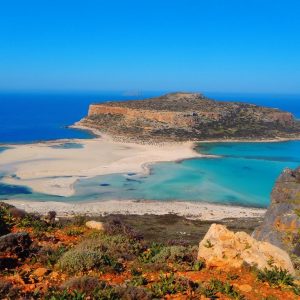Description
Knossos Palace is the largest Bronze Age archaeological site on Crete and has been called Europe’s oldest city.
Settled as early as the Neolithic period, the name Knossos survives from ancient Greek references to the major city of Crete. The palace of Knossos eventually became the ceremonial and political centre of the Minoan civilization and culture. The palace was abandoned at some unknown time at the end of the Late Bronze Age, c. 1380–1100 BC. The reason why is unknown, but one of the many disasters that befell the palace is generally put forward.
In the first palace period around 2000 BC the urban area reached a size of up to 18,000 people. In its peak the palace and surrounding city boasted a population of 100,000 people shortly after 1700 BC.
Unfortunately the volcanic eruption of Thera in 1628 BC was the final blow for Knossos. That volcano explosion killed upwards of 40,000 people in just a few hours, produced colossal tsunamis 40 feet tall, spewed volcanic ash across Asia, and caused a drop in global temperatures and created strangely colored sunsets for three years.







